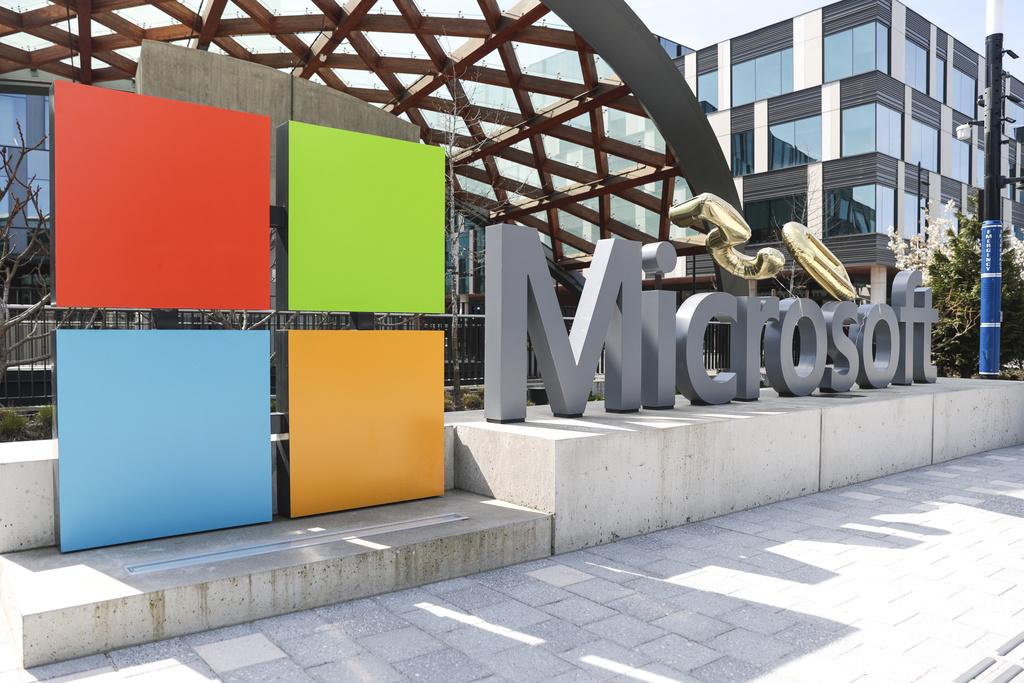Azure Growth Boosts Microsoft Profits, Beats Wall Street \ Newslooks \ Washington DC \ Mary Sidiqi \ Evening Edition \ Microsoft revealed Azure cloud revenue exceeded $75 billion annually, a 34% year-over-year jump. This milestone highlights Azure’s central role in Microsoft’s AI strategy. Strong quarterly profits, continued data center expansion, and strategic layoffs reflect the company’s aggressive cloud and AI infrastructure investment.
Quick Looks
- Azure revenue surpasses $75 billion, growing 34% year-over-year
- Microsoft posts $34.3 billion in Q4 profit, exceeding Wall Street estimates
- Quarterly revenue hits $76.4 billion, up 18% from last year
- CEO Satya Nadella touts 400+ data centers worldwide
- Azure now central to Microsoft’s AI expansion strategy
- Microsoft still trails Amazon Web Services, which earned $107.6 billion last year
- 15,000 layoffs announced despite soaring profits
- Capital expenditures expected to hit $30 billion next quarter
- Company maintains workforce at 228,000 employees, shift toward U.S.-based roles
- Tariffs and global instability cited as risk factors in annual report
Deep Look
Microsoft has officially pulled back the curtain on the financial power of its cloud empire. For the first time, the tech giant has revealed that Azure, its cloud computing platform, has surpassed $75 billion in annual revenue, marking a 34% increase compared to the previous year. The disclosure came as part of Microsoft’s end-of-fiscal-year earnings report, which also highlighted record profits and continued growth across its cloud and AI divisions.
While Microsoft has long touted Azure as the future of its business, especially in connection with artificial intelligence, this is the first time it has publicly quantified Azure’s annual revenue, giving investors a clearer view of how central cloud computing has become to the company’s success.
Strong Quarterly Performance
Microsoft reported fiscal Q4 profit of $34.3 billion, or $3.65 per share, far exceeding analyst expectations of $3.37 per share. Revenue for the quarter totaled $76.4 billion, up 18% from the previous year, and beating Wall Street forecasts of $73.86 billion, according to FactSet Research.
These gains come amid a massive industry-wide push to integrate artificial intelligence into enterprise products and services, and Microsoft has positioned itself at the forefront by linking Azure with its growing suite of AI tools, including its ChatGPT-integrated offerings and business-facing AI assistants.
Data Centers Fuel Cloud and AI Ambitions
“We continue to scale our own data center capacity faster than any other competitor,” said CEO Satya Nadella during a call with investors. Nadella noted that Microsoft now operates over 400 data centers spread across six continents, a key infrastructure component required to support both cloud computing and AI development.
That expansion, however, is expensive. Microsoft has faced rising capital costs due to its rapid build-out of data infrastructure, GPUs, and networking hardware needed to deliver on its AI ambitions.
To offset those costs, Microsoft has made some strategic operational changes, including layoffs affecting approximately 15,000 workers this year. Despite the cuts, the company reported that its total number of full-time employees remained unchanged at 228,000 as of June 30, though internal shifts have moved more roles into U.S.-based functions and fewer into product support or consulting.
Nadella addressed the layoffs in a recent memo to employees, acknowledging their impact while framing them as part of a larger transition into an AI-first company. “These decisions weigh heavily on me,” he said, “but they also reflect our need to reimagine Microsoft’s mission in the AI era.”
Azure’s Role in Microsoft’s AI Push
Azure is now deeply embedded in Microsoft’s AI strategy, serving as the delivery mechanism for AI tools aimed at large enterprises. These include AI copilots, advanced analytics engines, and the company’s partnership with OpenAI, which relies heavily on Azure infrastructure to deliver services globally.
Despite Azure’s growth, Microsoft still trails behind Amazon Web Services (AWS), which reported $107.6 billion in revenue for its last fiscal year ending in December. Still, Microsoft’s increasing investment in AI and aggressive infrastructure development could narrow that gap in coming years.
Big Spending, Bigger Expectations
To maintain momentum, Microsoft continues to pour billions into capital projects. Chief Financial Officer Amy Hood told investors that Microsoft expects to spend $30 billion on capital expenditures in the July–September quarter alone, a massive increase aimed at bolstering AI and cloud capabilities.
Competitors are following suit: Google recently announced an additional $10 billion boost to its capital budget, bringing its total to $85 billion, as it too tries to scale AI and cloud services at pace.
Geopolitical Risks and Economic Uncertainty
Microsoft’s annual report also flagged geopolitical instability and trade policies, including U.S. tariffs, as potential risk factors to its future performance. The report warned that the “volatility of U.S. tariffs has triggered economic uncertainty and could impact cloud and devices supply chain cost competitiveness.”
The company did not provide specific data on how tariffs have impacted its revenue, but included them among a range of uncertainties, from shifting government priorities to rising international tensions.
Looking Ahead
As Microsoft deepens its commitment to AI and continues building out Azure, the company faces both unprecedented opportunities and significant challenges. The market has responded positively to the company’s strong financials and transparent cloud reporting, which are seen as signs of long-term growth potential in a highly competitive sector.
By making Azure’s financials public and projecting significant capital investment ahead, Microsoft is signaling to investors that it is all-in on AI and cloud. That vision — while costly — is already paying off in the form of rising profits and investor confidence.
Azure Growth Boosts Azure Growth Boosts







